Sugar is bad.
We all know that, right?
Well, not so fast.
Sure, sugar is bad if you’re a couch potato with a pot belly. But for athletes, sugar may be your best friend.
Let me tell you all about the role of sugar in sports nutrition and my recent scientific publication on the topic!
Carbohydrates are a fuel source during exercise
Carbohydrates are your main fuel source during prolonged exercise.
You can store carbohydrates in your muscle (called muscle glycogen), and some in your liver (called liver glycogen).
After about 2 hour of intense exercise, these glycogen stores run out.
Luckily, you can also burn body fat as fuel.
In contrast to glycogen, we have more than enough body fat to use as fuel. But you can only burn fat very slowly, and therefore it won’t give you the same amount of energy your glycogen stores did.
So once your glycogen stores run out, you cannot maintain your intensity. This point is often called boinking, or hitting the wall.
A third source of energy, are carbohydrates which you ingest during exercise. Think of sport drinks. Once absorbed, these carbohydrates can be used as fuel right away.
Not all carbohydrates are the same
Whole foods such as potatoes usually contain carbohydrates in the form of starch.
Starch consists or a large number of glucose units. When you digest starch, it’s broken down into these glucose units, which are absorbed in your blood.
Glucose is a sugar (the most basic unit of a carbohydrate). It’s the sugar we refer to when we talk about blood sugar.
In practice, when we talk about sugar, we often mean sucrose (table sugar). Sucrose consists of a glucose molecule and a fructose molecule.
Fructose is a different type of sugar, best known as fruit sugar.
Traditionally, glucose has been the preferred carbohydrate in sports nutrition.
During exercise, you can burn more of the glucose you ingest as fuel compared to fructose. And after exercise, glucose is more effective at rebuilding muscle glycogen, making it a better choice for recovery.
However, more recent research has shown that strategic use of fructose can be highly beneficial for athletes.
Compared to glucose, ingested fructose is a less effective fuel source during exercise, and is less effective in rebuilding muscle glycogen after exercise.
Glucose and fructose are absorbed via different routes
In order to be absorbed, glucose has to be transported through as special gate in the intestine, called sodium-glucose linked transporter (SGLT1). When you ingest large amounts of sugar, SGLT1 gets saturated and you can’t absorbed it all fast enough. Think of a traffic jam in your intestine.
Fructose uses a different gate, called glucose transporter 5 (GLUT5).
Since glucose and fructose are absorbed via different routes, a combination of both sugars results in less of traffic jam compared to the same amount of sugar as just glucose or fructose. The results is that a combination of both sugars results in a higher rate of carbohydrate absorption.
Glucose and fructose provide more fuel during exercise
Burning carbohydrates for fuel is called carbohydrate oxidation. Carbohydrate oxidation can be measured based on breath analysis.
Carbohydrate oxidation shows you all the carbohydrates that are burned, but it doesn’t tell you if those carbohydrates came from your drink or from your own body stores. Ideally, you want to burn as much carbohydrates from your drink as possibly, so you have to use less of your glycogen stores.
Burning the carbohydrates you ingest is called exogenous carbohydrate oxidation. It can also be measured by breath analysis, but requires a bit more work.
Subjects have to receive a sport drink in which the carbohydrates have a special chemical signature. The more of the sports drink is burned, the more the chemical signature will end up in the breath of subjects, where it can be measured.
When glucose and fructose are ingested together, it results in a higher exogenous carbohydrate oxidation rate than when the same amount of carbohydrates are gives as just glucose or fructose. (1)(2)
And as a result, subjects perform better. A glucose fructose mix results in an 8% quicker time on a trial time compared to glucose, and 19% quicker compared to water. (3)
Glucose and fructose refuel after exercise
Based on the same absorption principle, you would also expect that a glucose/fructose mix would increase rebuilding of your muscle glycogen stores after exercise.
That was exactly was I researched in my recent publication, but the mix was not more effective than a glucose was given alone.
My study indicated that the mix drink was better absorbed in the intestine, but that the fructose was converted to lactate in the liver.
Now it’s important to realize that lactate is not the bad guy it’s made out to be. Lactate doesn’t causes muscle fatigue during exercise. In fact, lactate is actually beneficial as it’s being used as a fuel during exercise. (4)
But lactate cannot be used effectively to rebuild muscle glycogen.
While my study didn’t show a benefit of the mix for muscle glycogen, a mix is more effective for liver glycogen restoration. (5)
So the combination of both is optimal for total glycogen recovery (muscle and liver combined).
A mix drink is easier on the stomach and hydrates better
Maximal performance and recovery requires large amounts of carbohydrates. When athletes are not experienced with such protocol, often results in stomach complaints.
A glucose/fructose mix is much easier on the stomach than when the same amount of carbohydrates are ingested as just glucose or fructose on it’s own.
Finally, a mix of glucose and fructose also results improved fluid delivery. (6)
Conclusion
Compared to a single sugar, the combination of glucose and fructose:
– provides more fuel during exercise
– increases exercise performance
– increases muscle glycogen equally
– improves liver glycogen
– is easier on the stomach
The optimal sport drink protocol is:
– 1.8 g total carbohydrates/min during exercise
– 1.2 g total carbohydrates/kg/h after exercise
– total carbohydrates providing glucose and fructose in a 2:1 ratio
Athletes should slowly work up to these amounts to train the gut.
Follow Up
Cas Fuchs, a colleague working at the same lab as me, did a follow up study where he further looked into the role of sucrose in both muscle and liver glycogen repletion. He breaks it down in this video:

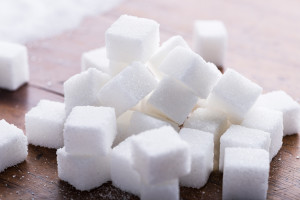
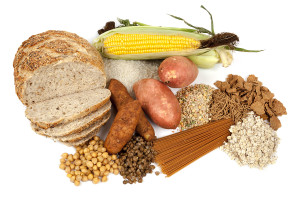
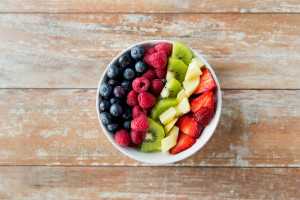
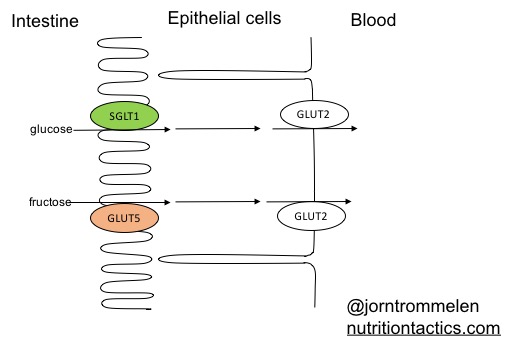
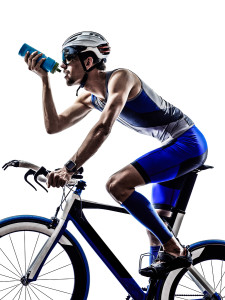

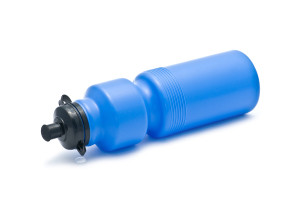
Great article, looking forward to reading the full text soon! I am a bit confused as to why fructose was converted to lactate in the liver though. Wouldn’t fructose generally be phosphorylated, split into trioses, converted to glucose, and ultimately directed to liver glycogen synthesis? Personally, I would assume that the lactate present in the liver would likely be a result of the Cori cycle (i.e. from skeletal muscle), and that the lactate would be converted to pyruvate and eventually glucose in the liver. Would like to hear your thoughts on this!